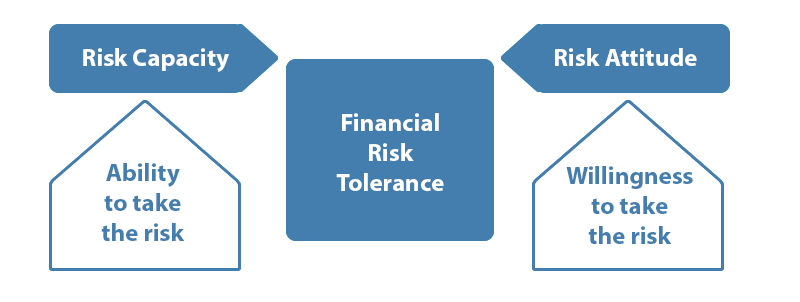The investment advice and asset allocation for an investor would have to be customized to the ability and willingness of the investor to assume risk. This is determined by a risk profiling exercise, which seeks to assess the attitude towards risk and possible loss in the portfolio and the willingness to pursue an investment plan, after understanding the underlying risks.
As SEBI registered investment adviser we obtain such information from clients as it is necessary for the purpose of giving investment advice. This information includes age, investment objective, investment horizon, income details, existing assets and liabilities and risk appetite.
Investelite Research have a process for assessing the risk that a client is willing and able to take. And we inform clients about their Risk profile after risk assessment. 1. Assessing a client’s capacity towards Risk, 2. Identifying client attitude towards Risk. 3. Appropriately interpreting client responses to questions and not attributing inappropriate weight to certain answers.
Investelite Research use questionnaires to generate risk appetite scores of clients. We ensure that questionnaires is fit for the purpose and any limitations have been identified and mitigated. Our questionnaire is neither too complex nor misleading for the client to understand and express a fair opinion.
Clients' financial risk tolerance - attitudes, values, motivations, preferences and experiences, is measured with a risk profile. The risk profile questionnaire helps in understanding the risk tolerance levels of a client. Risk tolerance is the assumed level of risk that a client is willing to accept.
This relates to the client’s financial circumstances and their investment goals. Generally speaking, a client with a higher level of wealth and income (relative to any liabilities they have) and a longer investment term will be able to take more risk, giving them a higher risk capacity.
Risk attitude has more to do with the individual's psychology than with their financial circumstances. Some clients will find the prospect of volatility in their investments and the chance of losses distressing to think about. Others will be more relaxed about those issues.

Risk tolerance is typically measured using questionnaires that estimate the ability and willingness to take risks. The responses of investors are converted into a score that may classify them under categories that characterize their risk preferences. Consider the following classification
The risk preferences of the investor are taken into account while constructing an investment portfolio.
When advice is given to a client to purchase a complex financial product, such a recommendation or advice must be based upon a reasonable assessment that the structure and risk-reward profile of the financial product is consistent with clients experience, knowledge, investment objectives, risk appetite, and risk capacity
NOTE :- Find your questainer below. All fields are mandatory.
Note : Client’s with long term investment goal or capital appreciation as investment objectives are not accepted at The Investelite Research Investment Adviser Private Limited.
In setting up an investment portfolio suitable for you, your financial adviser will ask you a series of questions about your financial and lifestyle goals. Using this information, plus details of your current assets, liabilities and income, your adviser can determine what level of risk or exposure you are prepared to tolerate in relation to fluctuations in the marketplace - and the level that makes sense for your stage in life. From this, an appropriate mix of assets can be allocated to your investment portfolio.